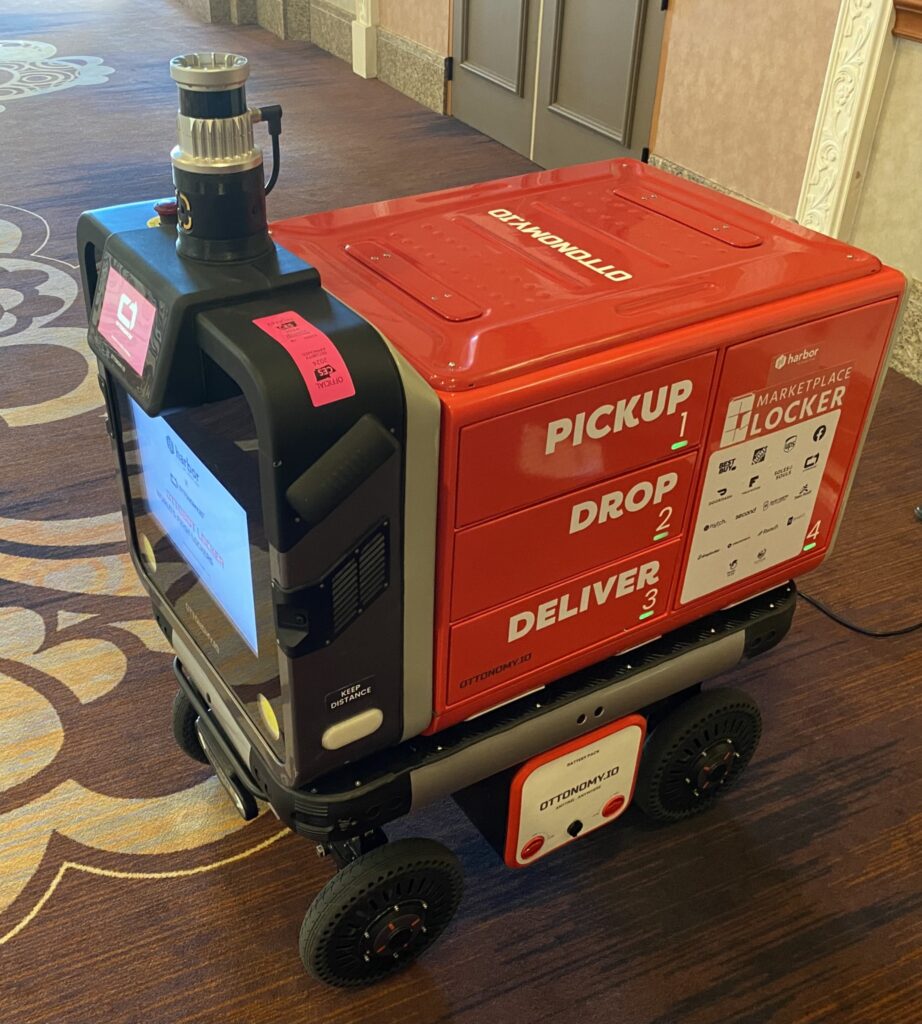Ottonomy adds lockers to delivery robots
Ottonomy — a business built on a network of delivery robots — is looking to transform hyper-local deliveries using an autonomously controlled mobile storage locker.
About 50 of the SAE Level-4 four-wheelers are already shuttling food around airports, quick-service restaurants, casinos, and university campuses in the U.S., the U.K, and Spain. And they’ve added storage lockers to the available body types in a partnership with Harbor Lockers.
“It’s not just about food deliveries,” founder and CEO Ritukar Vijay said during a Consumer Electronics Show (CES) press conference. The Harbor relationship opens doors to work with Home Depot, Best Buy, UPS, DoorDash and others, while users unlock the locker doors with a related app. During non-peak hours, the configurations could support peer-to-peer delivery systems, like an Uber for packages, he said.

As small as the shopping-cart-sized vehicles may appear when compared to a commercial truck, the hyperlocal delivery market is expected to be worth US$3.6 trillion by 2027, growing at a CAGR of 17.9%, Vijay said. And only a handful of major players such as Starship Technologies are involved in robotic deliveries.
Various body styles will be needed to serve varied applications, too. Another new configuration will dispense cold brew.
“One-size-fits-all doesn’t work,” Vijay said. “Different businesses have different needs.”
Robots run five hours on a charge
The Ottonomy platform features four-wheel drive and four-wheel steering, moving along at about 16 km/h. While it can’t handle steps, it is equipped to handle 10-cm curbs or any ADA (Americans with Disabilities Act)-compliant route. An active suspension helps to keep the 250-lb. ‘bot from rolling over.
Their fully charged batteries can last five to six hours, and charge in about 70 minutes. But swapping batteries has proven to be a more efficient model, ensuring a range of seven to eight hours with a single charge.
“When these robots are doing a delivery service, they are completely autonomous,” Vijay said.
But it takes some work. The robot was delivered with a remote control to the press conference. Any area served by the units needs to be defined by a geofence. Maps continually update themselves after that.
“When the robot hits the road, it’s a very complex problem,” he said.
Have your say
This is a moderated forum. Comments will no longer be published unless they are accompanied by a first and last name and a verifiable email address. (Today's Trucking will not publish or share the email address.) Profane language and content deemed to be libelous, racist, or threatening in nature will not be published under any circumstances.